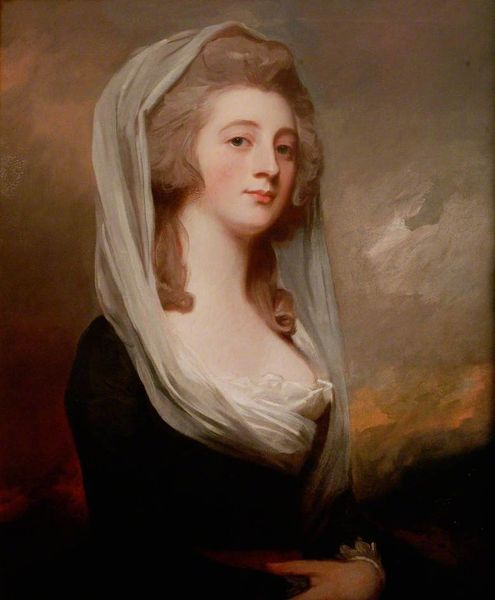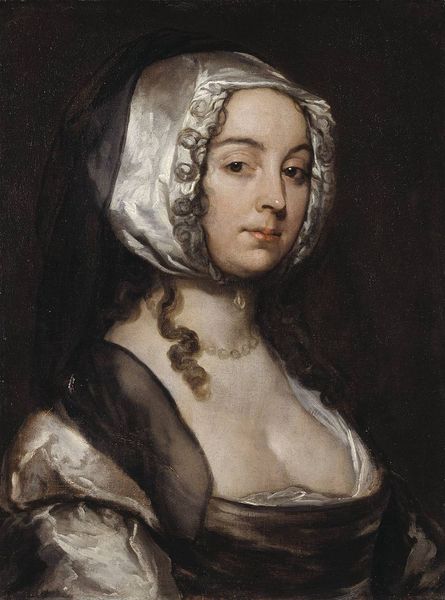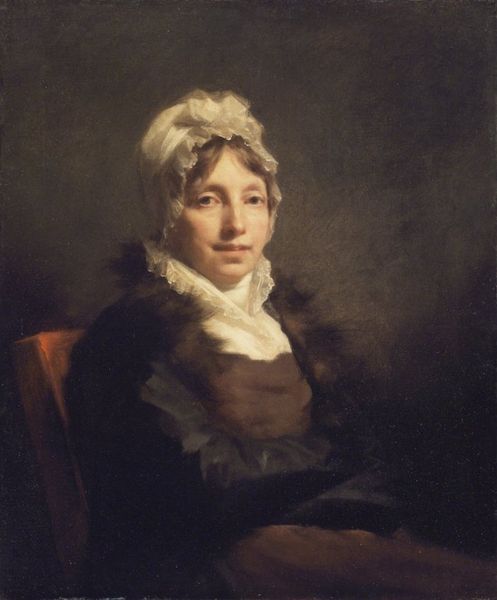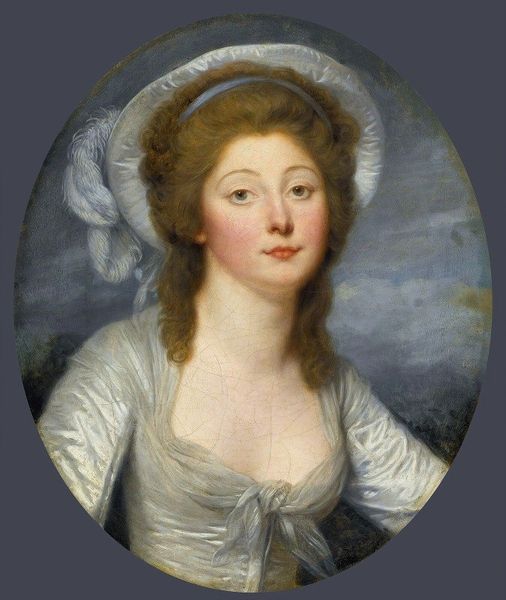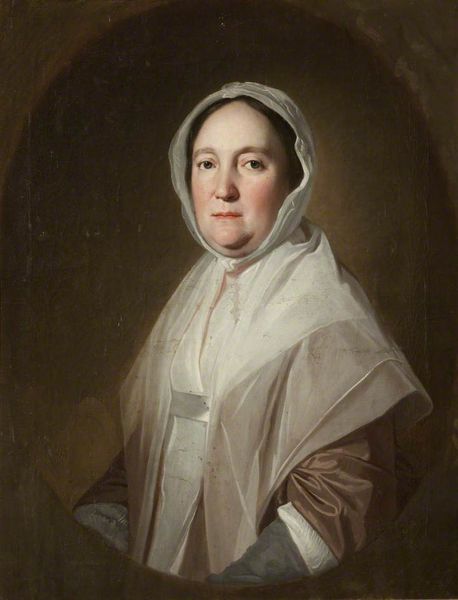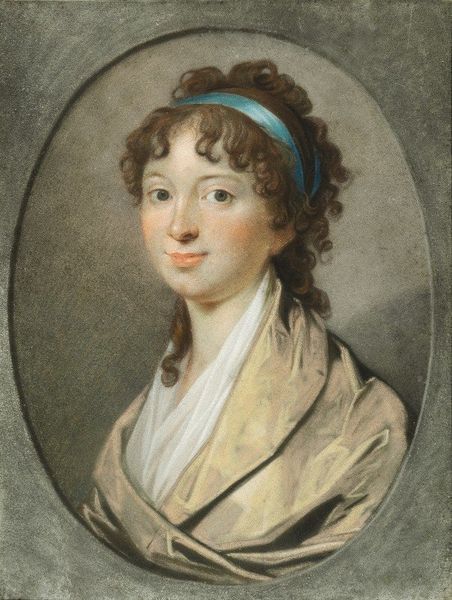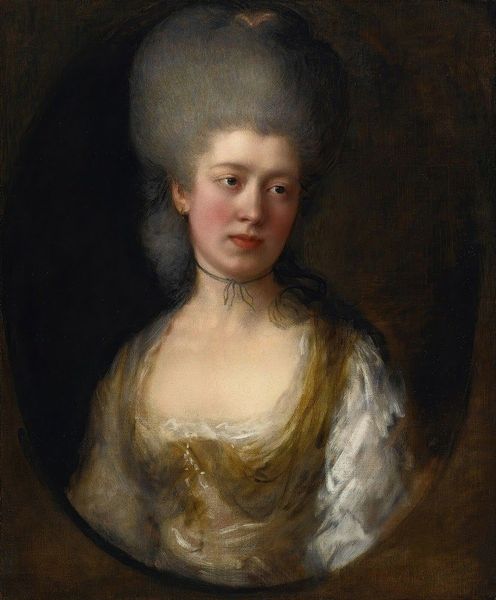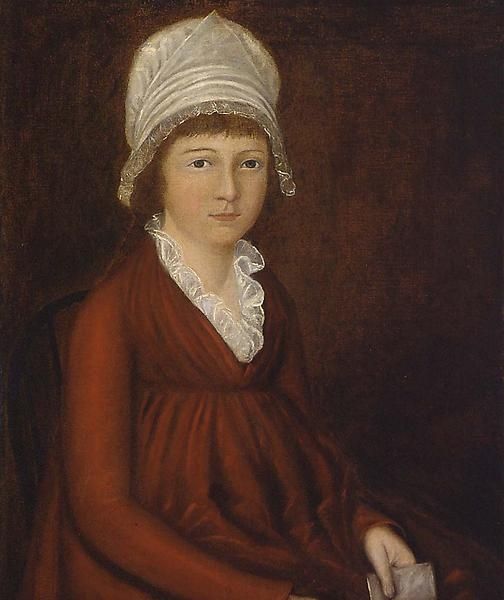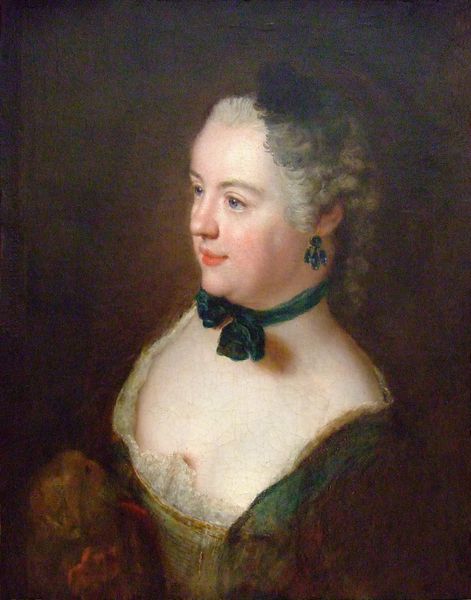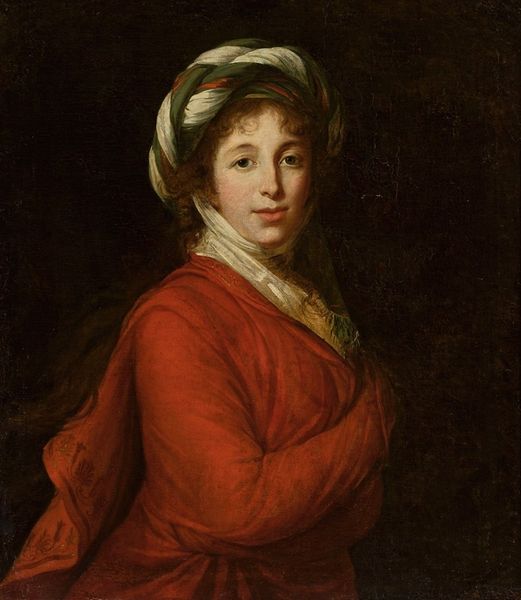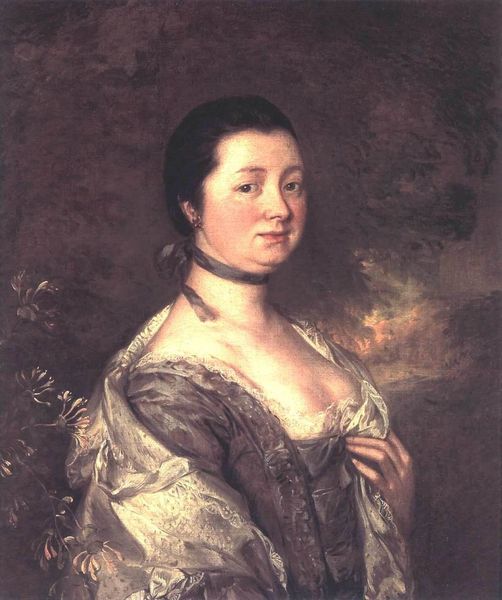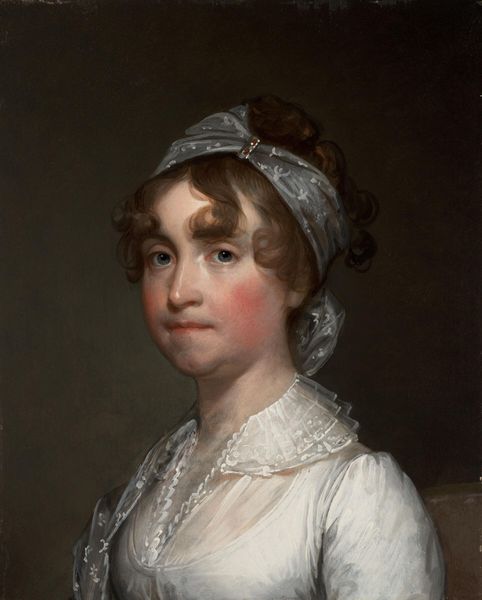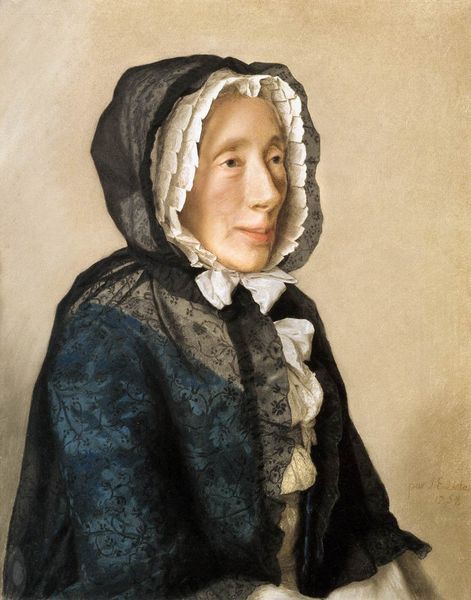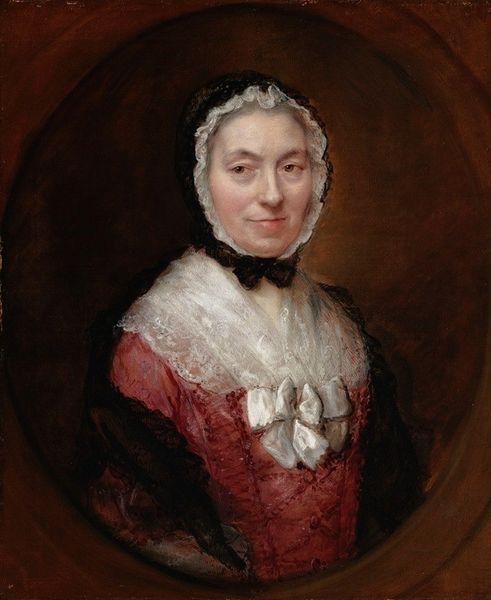
Copyright: Public domain
Editor: So here we have George Romney's "Esther Taubman, née Christian," painted in 1786, using oil paint. The fabric is what strikes me immediately—the cap and the sleeves look incredibly intricate. What catches your eye in terms of how this painting was made? Curator: I find myself thinking about the specific social dynamics surrounding this portrait's creation. Consider Romney's studio: What kind of labor went into the preparation of his paints, the stretching of the canvas? Was it all his own hand? Editor: That’s a fascinating point. So, are you suggesting that looking at who made the materials could shift our focus from the sitter herself to the unseen artisans behind the work? Curator: Precisely! Also, think about the textile industry. Those delicate lace details you mentioned—they represent a massive global network of production and consumption. Someone, likely many women, were engaged in the laborious task of creating that lace. That kind of artistry wasn't always considered "high art." Editor: That's really changed how I see this portrait. It’s not just a depiction of a wealthy woman; it’s a document hinting at a whole range of economic and social relationships tied to its very existence. Curator: Exactly! By analyzing the materials and their social context, we can unpack the power dynamics inherent in artistic production and question traditional art historical narratives. Editor: Thanks! Now I understand how material analysis reveals these hidden connections. Curator: And I believe it’s a crucial lens for understanding not just this portrait, but the broader social fabric of the time.
Comments
No comments
Be the first to comment and join the conversation on the ultimate creative platform.
